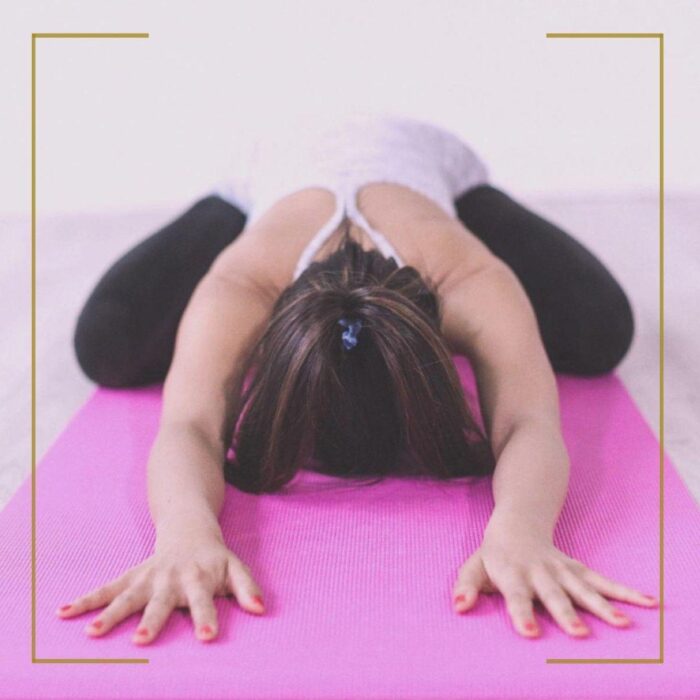By: Gelie Dela Pena
In the last few years, Yoga has been gaining more and more interest from the public because of the many benefits people have been experiencing from it. From the ancient practice of Vedic yoga, which was more of a practice of studying the old sanskrit writings, yoga has grown tremendously through the years. It’s grown so much that we are now able to enjoy various styles of yoga to answer almost every person’s preference! From yoga practiced in a 35 degree heated room to slow and mindful movements, there are many different types of yoga that one can choose from to begin their practice. And if you’re looking to begin practice but aren’t sure which one to start with, here are 5 different types of yoga and their benefits that you can begin to explore.

Vinyasa Yoga
Vinyasa Yoga is known for being two things: dynamic and progressive.
It’s so dynamic, this class is perfect for people who are used to fast-paced workouts. Vinyasa Yoga requires 3-4 poses as a transition back to your neutral or resting pose. This transition is called the “vinyasa.” The fun part about this class is you never know what “peak pose” you’re going to get and it often varies! One day, you may be working towards a backbend, then focusing on opening your hips for more mobility in the next class. It is a great class to attend if your goal or intention is to learn how to prepare your body to enter and exit poses you would like to master or achieve.
It’s also known for being a progressive class, which means you are encouraged to practice at your own pace without feeling intimidated to jump into a complicated or advanced pose right away. Vinyasa Yoga teaches you to be patient with yourself as you gradually build strength, stamina and flexibility in your practice.
Ashtanga Yoga
Ashtanga Yoga is one of the older yoga traditions where students follow a memorized sequence of poses every time they practice. It follows a six series progression from the beginners’ series a.k.a. Primary Series, the Intermediate Series, and four advanced series.
As beginners, you’ll be taught the basic Surya Namaskars or Sun Salutations, which are part of the “warm-up” of every advanced series, as well as the closing poses to end each practice. As you begin to build a more consistent practice, your teacher will gradually add the next few poses of the series when they see that your body and mind are ready for it.
Students are encouraged to work closely with their teachers, in Ashtanga Yoga. In fact, a student is not allowed to move forward to the next pose without the permission and guidance of their teacher. Because of its nature, this type of yoga instills a lot of patience and discipline to its students. And since it is encouraged that the student should memorize the sequence of poses, this is a great type of yoga to practice at home.
Hatha Yoga
Hatha Yoga is also one of the older types of yoga that has been proven to help build a lot of strength in the body and stamina in the mind. It is less dynamic because poses are sustained for a longer amount of time with a steady and prolonged breath as compared to other types of yoga.There is no fixed sequence of poses to follow in each class, but sometimes a class will consist of lesser number of poses if the amount of time holding the pose is longer, which is usually done in more advanced hatha classes. This type of yoga helps develop a lot of mental fortitude because it tests your ability to overcome your desire to give up in a pose and build on your capacity to carry yourself through the challenging poses. It helps you overcome your overthinking while holding a pose and focus instead on your steady breath to keep you calm and steady.
Hot Yoga
If your goal is to trim down and shed off those extra pounds while also improving your stamina and flexibility, Hot Yoga is a good class to explore. Generally, Hot Yoga is practiced in a heated room with temperatures ranging from 35 to 42 degrees celsius. The heat helps your muscles “open up” so you have a bit more range of movement to be able to do the poses in class while also detoxifying your body through the amount of sweat you will be producing. It is a great workout for your heart as this type of yoga increases your heart rate to help improve or regulate your body’s circulation.
Nothing beats that “After Yoga Glow” at the end of class that sometimes even lasts the entire day.
Yin Yoga
There are two types of energy, the “Yin” and the “Yang. All previous types of yoga mentioned in this article, which are also considered “yang” practices of yoga, as they are more active practices.
Yin Yoga is a much slower and meditative practice. This type of yoga is focused more on increasing mobility in the body by stretching and releasing tension in the muscles and connective tissues through sustained poses held for at least 1-3 minutes. The intention of this practice is to restore energy and vitality in the body, rather than spending it, which is done in Yang Yoga.
Yin Yoga helps us create more calmness in the mind and more space in the body for movement. This type of yoga is great for beginners, students who are more advanced in age, and for those who are experiencing aches and pains from working from home.
Go with the Flow
As anything else, take comfort in knowing there is no “right” and ultimately the “best” way to practice yoga. Each body has unique needs and goals. At the end of the day, it’s a matter of deep diving within yourself to know which practice works for you over time. Feel free to explore the different types of yoga and their benefits and stay open as you find which style works best for you and allow yourself the freedom to have those practices change, too!
Aside from the health benefits of yoga, it’s also a good way to practice mindfulness and gratitude.
Expand the good vibrations by incorporating it to your daily routine. Breathe, have fun , and just go with the flow.
May you be well, may you be happy. Namaste!




